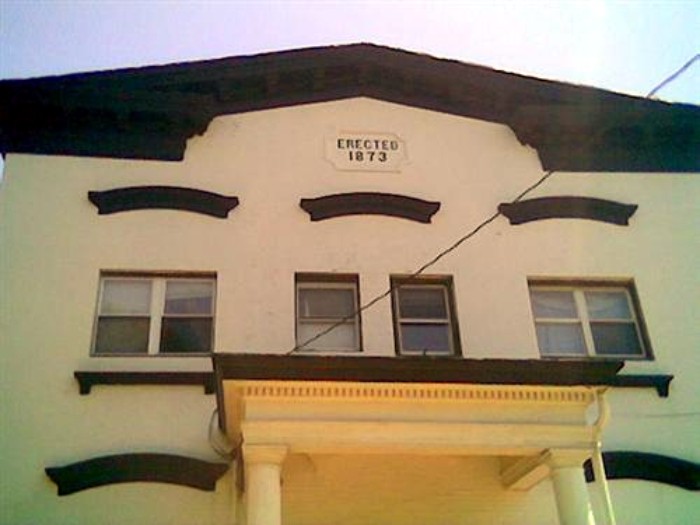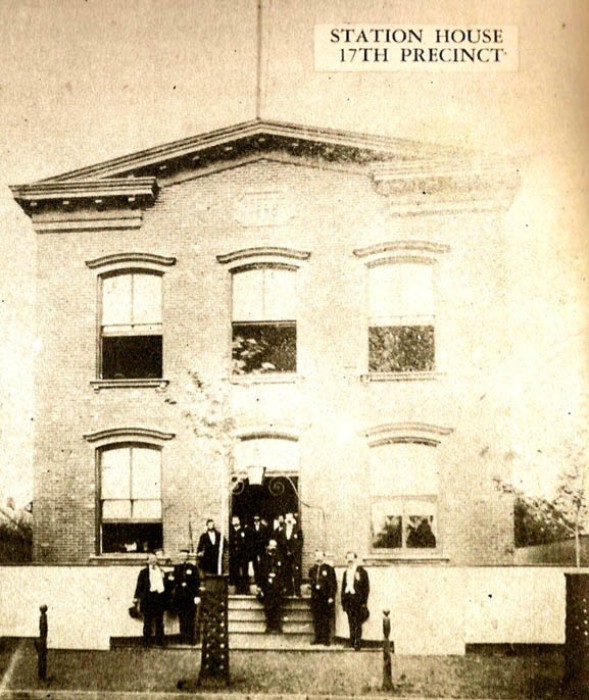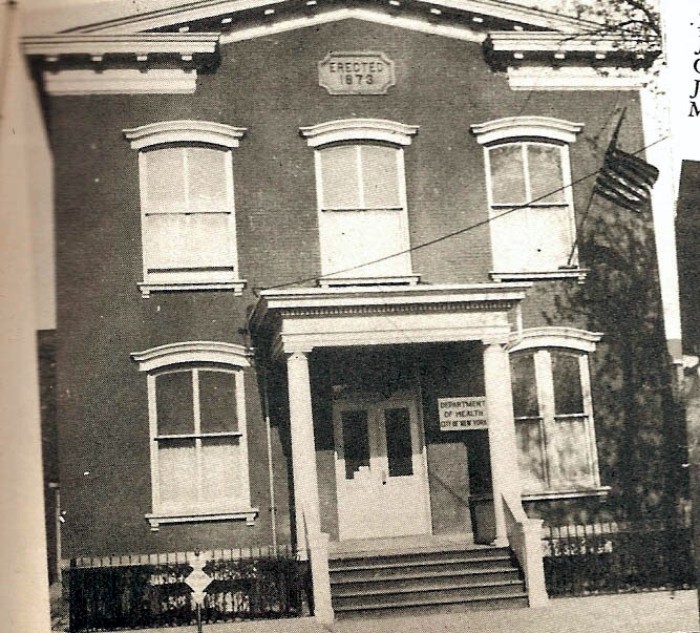Building of the Day: 109-111 Bradford Street
Editor’s note: An updated version of this post can be viewed here. Brooklyn, one building at a time. Name: Built as New Lots Town Hall, then 71st Precinct, then Bradford Street Hospital, now apartments Address: 109-111 Bradford Street Cross Streets: Fulton Street and Atlantic Avenue Neighborhood: Cypress Hills Year Built: 1873 Architectural Style: Greek Revival/Italianate…

Editor’s note: An updated version of this post can be viewed here.
Brooklyn, one building at a time.
Name: Built as New Lots Town Hall, then 71st Precinct, then Bradford Street Hospital, now apartments
Address: 109-111 Bradford Street
Cross Streets: Fulton Street and Atlantic Avenue
Neighborhood: Cypress Hills
Year Built: 1873
Architectural Style: Greek Revival/Italianate
Architect: Unknown
Landmarked: No
The story: In 1860, a group of men gathered in the town of New Lots to form a volunteer fire department. By 1866, they were pretty much established and were able to build a tall, octagonal wood framed bell tower on this site which was manned 24/7 to watch for fires in this small town of less than 100 families. In 1873, the Town of New Lots had grown to the extent that they needed to have some more formal civic structure, and the lot near the fire tower was the perfect place for building the New Lots Town Hall. This sturdy two-story plus basement brick building housed the town offices on the ground floor, and the fire department on the upper floor, which was a large open room.
In 1878, a new law required towns to house a police force, and the town hall was called into duty again. Everyone was shuffled around and squeezed into the building. Downstairs became the town meeting room and Clerk’s Office, the fire headquarters office, and the police receiving desk and muster room. Upstairs was made into a barracks, while the basement held four cells, plus two rooms for emergency lodging. The town morgue was placed in the fire tower, and it was the busiest place of all, as there seemed to be a lot of fatalities in New Lots due to the LIRR surface railroad, which according to the Brooklyn Eagle, supplied a wealth of mangled bodies.
By 1886, the town of New Lots had become the 26th Ward of the City of Brooklyn, and a city hall was not needed. The building became the 71st precinct of Brooklyn’s police force. An annex was built at the rear for more cell space, and this building was in use until 1892, when a larger police precinct building was erected at 482 Liberty Avenue. At that point, the building was taken over by the Board of Education for use as a school annex, but in spite of the fact that they needed the space badly, the Board of Ed didn’t move on it, and the building was still empty in 1893, its windows broken by local boys. The history of the building was recalled when the old fire tower being demolished that same year.
Fortunately, the building did not remain abandoned for long. In 1894, the old town hall building was purchased for use as the 26th Ward Homeopathic Hospital and Dispensary, which became the Bradford Hospital, a walk-in clinic for the neighborhood’s poor, who were growing in numbers. The hospital committee had to wait until it had raised enough money to renovate the building to their use, as well as staff and supply it, but at last, in 1899, the Hospital and Dispensary opened to the public. It was immediately very busy, and remained that way.
Another of those train accidents took place in 1904, when a Fulton Street elevated train car derailed, and fell to the street below. A careless track employee had forgotten to pull a switch. The crash killed several people, and wounded many more. Many of the most severely injured were taken here. The hospital remained in service to the community until 1934, when it was shut down. It then became part of the NYC Board of Health for an indeterminate number of years
The building was then used for various storage and commercial purposes until it was converted into housing. Today it is a two family house. At some point, the handsome large windows were filled in, but the eyebrow lintels and sills remain far above, as question marks to the validity of cheap alterations. Fortunately, the porch, which was a 1930s addition, and cornices and roof line have remained as well. New Lots remains only as a name today, but this hall is one of the few remaining pieces of the town’s history. GMAP
(Photo:Nicholas Strini for PropertyShark)








I always wondered the history of that building because of the date on the plaque. The windows and the fact that the brick was covered always bothered me.
Here’s some old pictures of the LIRR when it was above ground:
http://tapeshare.com/LIRR.html